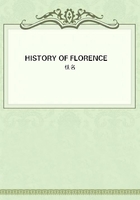
第48章
At the time these events took place there was a great scarcity in the city, and discontent prevailed both among the highest and the lowest classes; in the latter for want of food, and in the former from having lost their power in the state. This circumstance induced Andrea Strozzi to think of making himself sovereign of the city. Selling his corn at a lower price than others did, a great many people flocked to his house; emboldened by the sight of these, he one morning mounted his horse, and, followed by a considerable number, called the people to arms, and in a short time drew together about 4,000 men, with whom he proceeded to the Signory, and demanded that the gates of the palace should be opened. But the signors, by threats and the force which they retained in the palace, drove them from the court; and then by proclamation so terrified them, that they gradually dropped off and returned to their homes, and Andrea, finding himself alone, with some difficulty escaped falling into the hands of the magistrates.
This event, although an act of great temerity, and attended with the result that usually follows such attempts, raised a hope in the minds of the nobility of overcoming the people, seeing that the lowest of the plebeians were at enmity with them. And to profit by this circumstance, they resolved to arm themselves, and with justifiable force recover those rights of which they had been unjustly deprived.
Their minds acquired such an assurance of success, that they openly provided themselves with arms, fortified their houses, and even sent to their friends in Lombardy for assistance. The people and the Signory made preparation for their defense, and requested aid from Perugia and Sienna, so that the city was filled with the armed followers of either party. The nobility on this side of the Arno divided themselves into three parts; the one occupied the houses of the Cavicciulli, near the church of St. John; another, the houses of the Pazzi and the Donati, near the great church of St. Peter; and the third those of the Cavalcanti in the New Market. Those beyond the river fortified the bridges and the streets in which their houses stood; the Nerli defended the bridge of the Carraja; the Frescobaldi and the Manelli, the church of the Holy Trinity; and the Rossi and the Bardi, the bridge of the Rubaconte and the Old Bridge. The people were drawn together under the Gonfalon of justice and the ensigns of the companies of the artisans.